For the past few years, there’s no denying designer and art collaborations are at its peak. However, this is not a new phenomenon. For decades, the two creative genres have merged together to create magical outcomes.

What’s the deal with all these art and fashion collaborations? Well, with the help of the fashion industry, art has become more accessible to the public. Not everyone can afford to buy an original Rembrandt and not everyone is an art-museum goer. Surprisingly, the relationship between fashion and art is mutually beneficial. Everyone gets something in return. Fashion is sometimes judged as a frivolous designer practice. By partnering with a visual artists, a designer or fashion house can gain a level of respect. In turn, practicing artists reach a wider and more populist audience. So we’ve compiled a list of some of our favourite designer and art collaborations that have revolutionised the fashion industry and how we perceive fashion and art today.
Yves St Laurent and Piet Mondrian

One of the earliest fashion and art crossovers was way back in the mid 60s, when the ‘mod style’ was becoming a prominent trend across the UK and would later spread to the US. The mod style celebrated anything to do with sophisticated lines, sharpness and individuality. The more bold, the better! During this time, luxury designer Yves Saint Laurent took to opportunity to combine his fashion designs with the iconic work and geometric ‘neoplasticism’ of Dutch artist, Piet Mondrian. Inspired by various paintings of the artist, Yves Saint Laurent created the Fall Mondrian collection, a series of geometric A-line cocktail dresses. As the mod style was at its peak, reviews of Saint Laurent’s collection were phenomenal. He captured the public’s imagination and opened new possibilities for art and its influence on fashion.
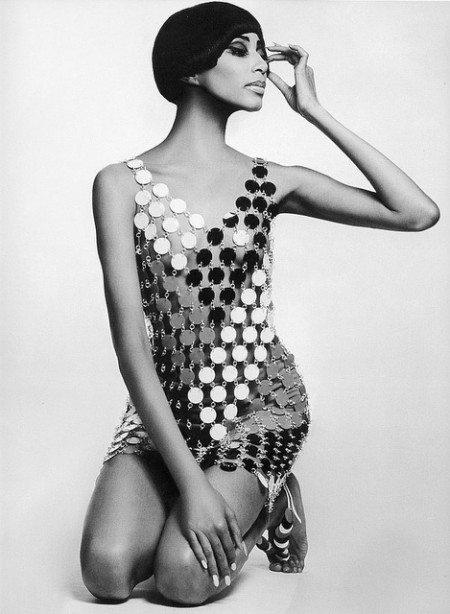
Paco Rabanne and architecture
It’s not just visual artists who have inspired the fashion designers. A simple architectural structure can spark an ingenious creation from one of the world’s leading contemporary designers. Paco Rabanne is one of them. His first runway show in 1966, debuted his 12 Un-wearable Dresses in Contemporary Materials collection. His runway show left the fashion industry stunned as it featured clothing items cleverly constructed from sheet metal and rubber. Despite using unconventional materials, Rabanne skilfully designed the pieces to fit the proportions of his models. Now that’s dedication!
Louis Vuitton and Daniel Burns
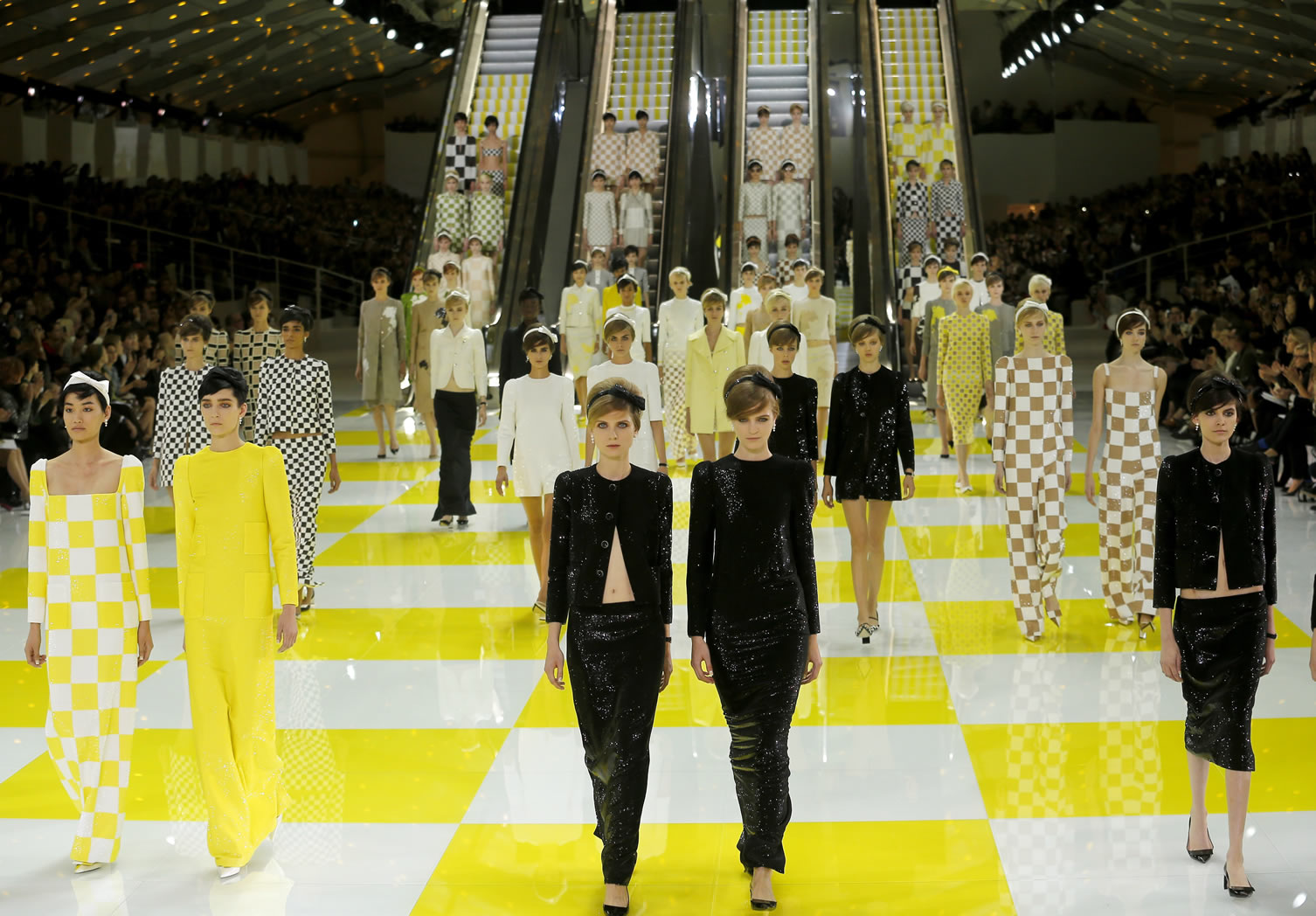
Something a little more recent but just as noteworthy. We’ve seen how the fashion world has embraced the visual arts from historical concepts to the modern day. But many forget the relationship between art and fashion is, in fact, a two-way street. Art has just the same amount of engagement in the fashion world. Leave that to Marc Jacobs, who takes artistic inspiration and artist participation to a whole new level. Collaborating with conceptual artist Daniel Buren, Marc Jacobs 2013 Louis Vuitton show created a ‘totally crazy experience’. Not content with incorporating Buren’s check canvas style into his designs, Jacobs asked the artist to design the staging of his entire catwalk. Having complete artistic freedom, Buren designed a gorgeous monolithic set with moving escalators and had the models move like Chess pieces across the ‘board’. The breathtaking show was held in the Louvre, the capital of the classical arts.
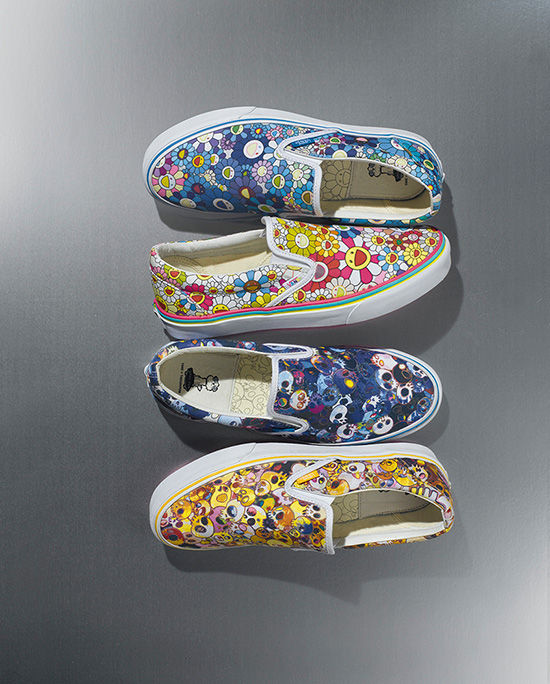
Vans and Takashi Murakami
Who doesn’t love a brightly coloured shoe? Partnering with acclaimed Japanese contemporary artist Takashi Murakami, Vans created an eclectic collection under its premium label, Vault by Vans in 2015. And its way cool! A big fan of the Vans silhouette, ‘the Classic Slip-On’, Murakami brings forth an assortment of designs in lively colours and shapes inspired by traditional Japanese art, the anime aesthetic and pop-culture. His style, recognised as the term ‘Superflat’, blurs the lines between the high and the low arts. Murakami’s recurring motif – the smiling flower – is brought to life on the limited edition slip-ons.
Alexander McQueen and Damien Hirst
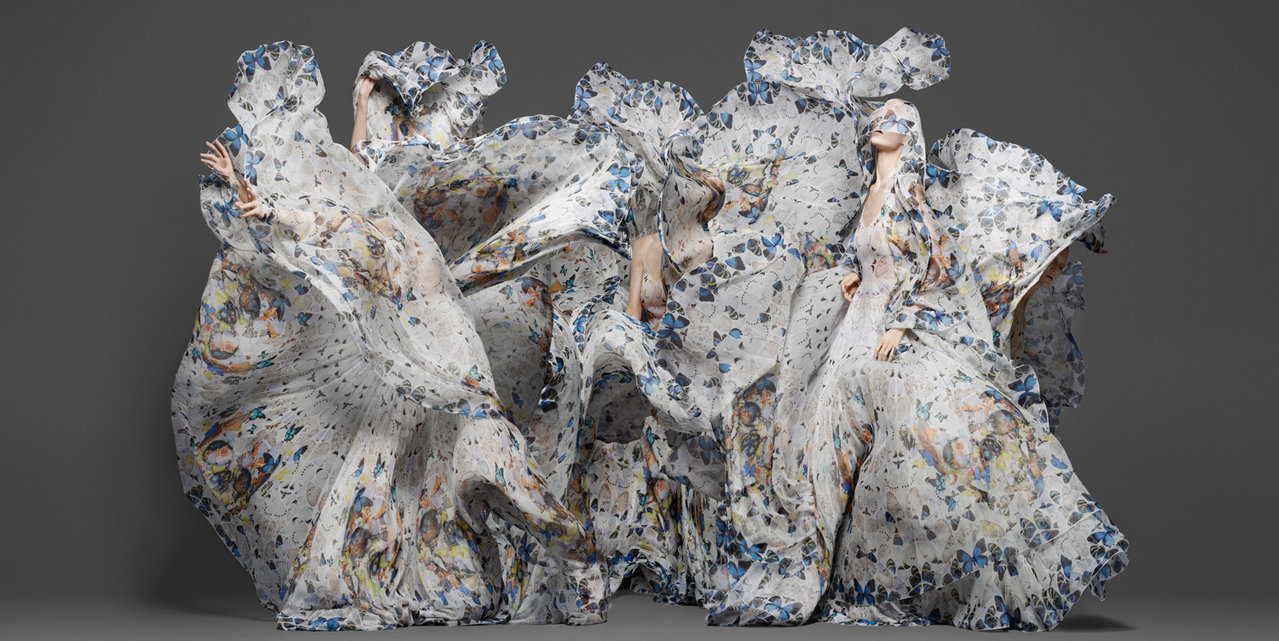
What happens when you combine two of the darkest minds in contemporary design and art? Only success! Alexander McQueen and Damien Hirst, Spring Summer03 collection is a collaboration that is hauntingly dark as well as beautiful. Ethereal, fashion designer and artist create a set of scarves and clothing line, playing on the shared macabre vision of the two. An unusual combination but it works! Originally inspired by Dante’s ‘Inferno’, McQueen adapts the artist’s Entomology series, works which feature mandalas in an array of butterflies, spiders and other insects. These kaleidoscopic images are laid out to create the signature McQueen skull motif on the Spring Summer03 collection.
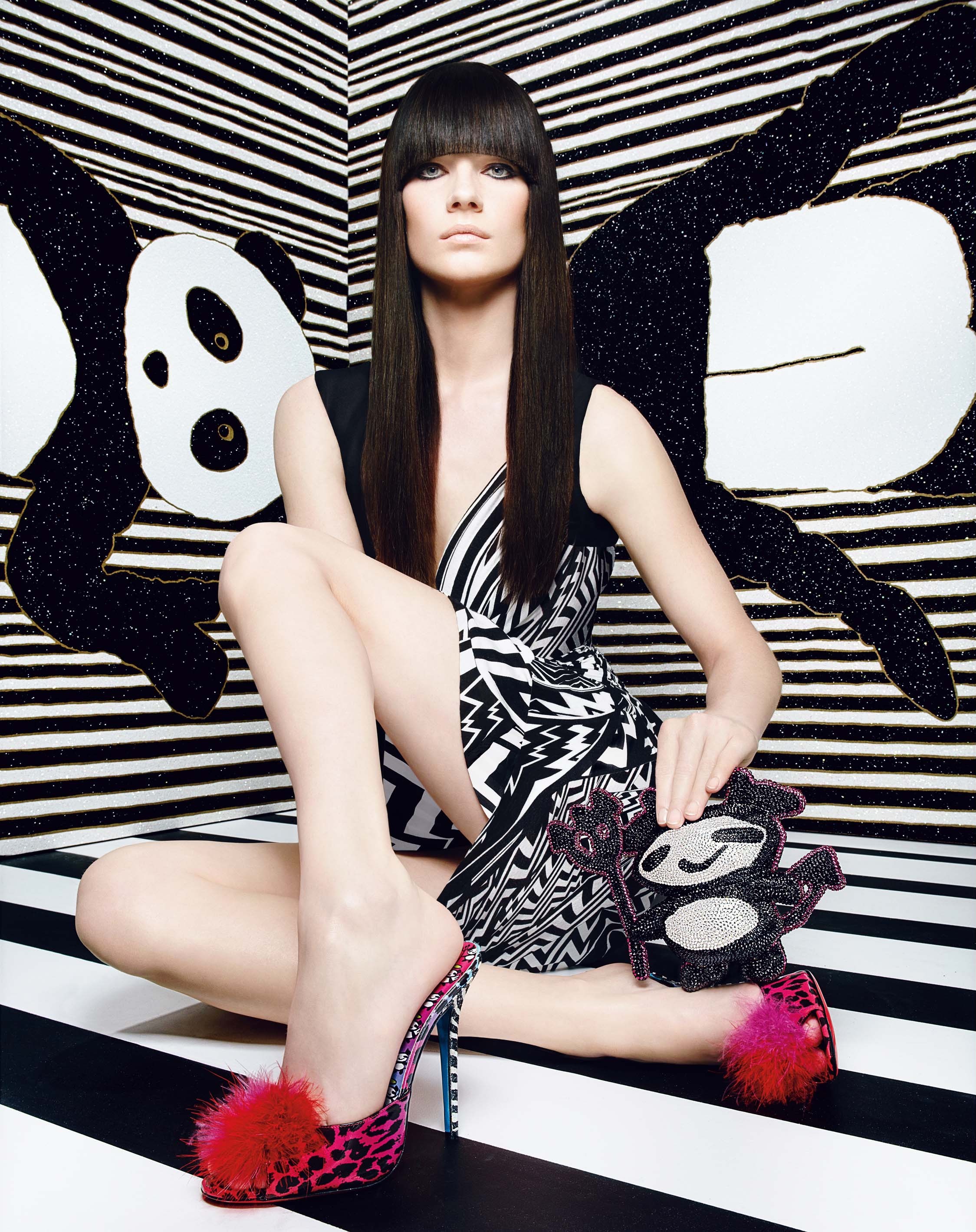
Jimmy Choo and Rob Pruitt
In 2012, international renowned footwear designer, Jimmy Choo collaborated with contemporary artist Rob Pruitt to create a limited collection of shoes, scarves, clutches and other accessories. The shoes can literally classify as artworks themselves. Bold and energetic, the graphic patterns lining the shoes appear to come to life on the active wearer (model). Together, the duo created a limited collection, decorated in a variety of vibrant colours with motifs, ranging from glittery zebras, cartoon pandas, animal prints and hand applied crystals.
K8 Hardy and Oscar Tuazon
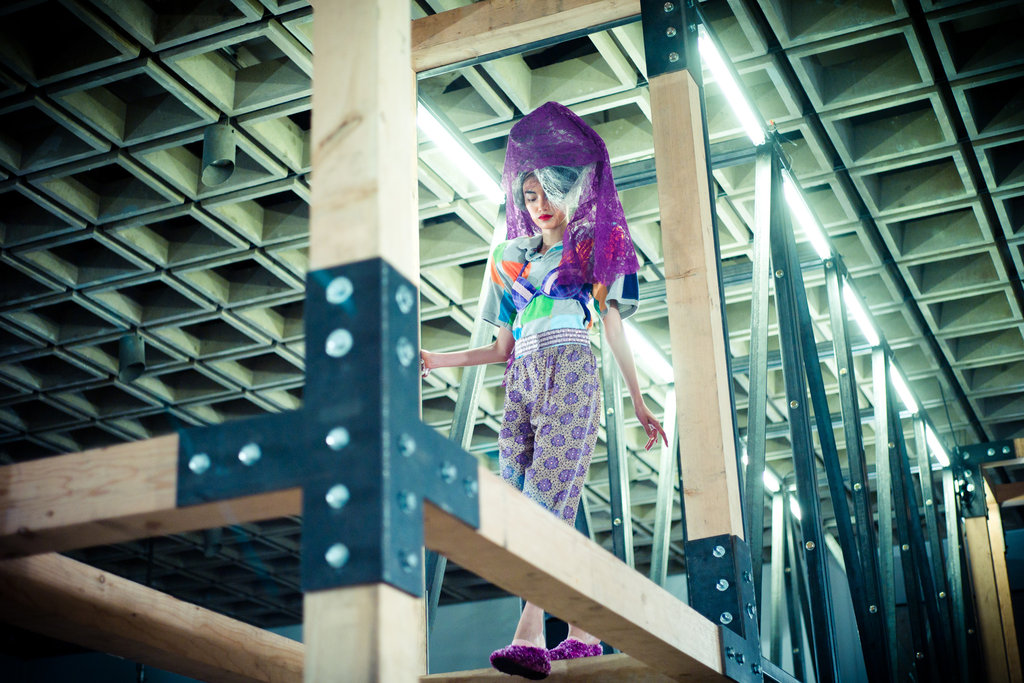
Although not a fashion designer, artist K8 Hardy’s artist collaboration with Oscar Tuazon was an imaginative movement that encouraged the public to reassess their perception of a typical fashion show. In this case, fashion defines the art. Hardy and Tuazon’s Untitled Runway Show was a performance work created for the Whitney Biennal, 2012. Made up of three sections, Lookbook, Backstage and Campaign, the performance involved models in eye-catching yet unusual clothing pieces descending an even more unorthodox runway. The runway was constructed by Tuazon and reflected his previous work where form follows function. Stairs, wall partitions and walkways are haphazardly arranged and made up of bare industrial materials. Instead of the clothes as the primary feature, it is the runway procession that is central to the performance work. As the models walk through the permeable boundaries, Hardy challenges a conventional procession of high end. Instead of having her models only walk forwards and backwards, she has them walking up and down steps and through the open walls and barriers.
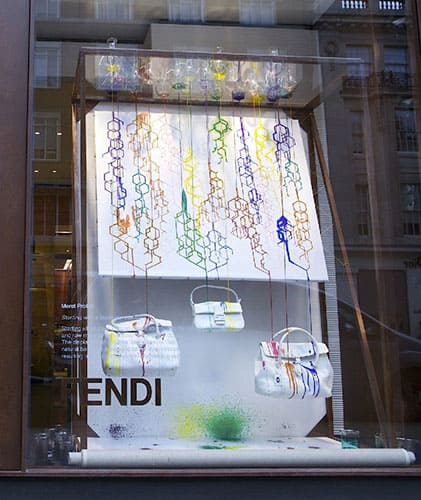
Fendi and Meret Probst
A collaboration with Fendi is a once in a lifetime opportunity. Students of the Britain’s Royal College of Art were lucky indeed when they were encouraged to create an installation for Fendi’s Sloane Street Fendi boutique. Fendi allowed the students creative reign and the results paid off. Meret Probst’s Starting with a Blank Canvas, resided in the front window of the Fendi show. Inspired by the bright colours of the legendary label, Probst’s display begins on a plain white canvas. Slowly, streams of coloured dye were released into winding polygonal tours down the canvas which dripped onto plain white Fendi purses hanging from the bottom. Probst’s peculiar invention transforms both bag and display ‘into a decorative and ever-changing picture’.
Mary Kantrantzou and Mark Titchner

As part of the “Britain Creates 2012” movement, fashion designer Mary Kantrantzou and artist Mark Titchner worked together to create a seven minute digital animation, titled ‘Tint the pallid landscape (off to the wars in lace)’ along with a two part print. Known throughout the fashion world for her vivid and highly detailed digital prints, her clothing items become wearable canvases of digital collages. The collaboration fused two graphic styles into one and formed a digital world that was densely layered and playful. Psychedelic patterns undulate behind slow moving script. Words like ‘Stamina’, ‘Strength’ and ‘Agility’ float across the screen. Although the digital video has potential to cause a seizure, its colourful aesthetic made it a memorable piece for ‘Britain creates’!
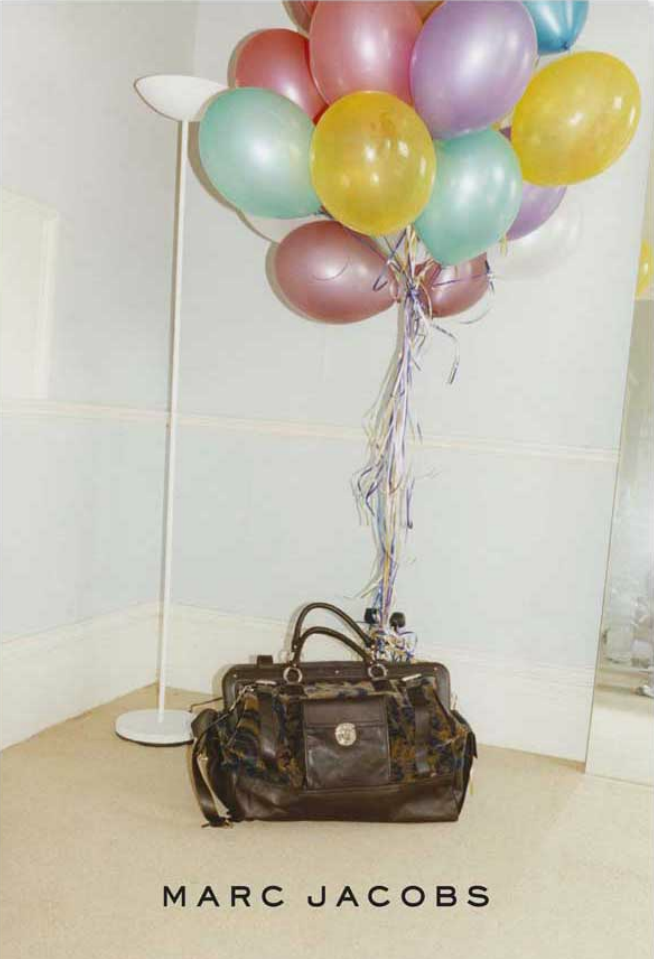
Marc Jacobs and Juergen Teller
Since 1998, fashion designer Marc Jacobs and photographer Juergen Teller have collaborated to create a variety of minimalistic still life images for campaigns. We can’t even imagine what the brand would have looked like before or without Juergen Teller! Teller’s rosy tinted and over-exposed photographs are playful, resembling an everyday polaroid shot. The simplicity and grunginess behind every candid shot shows every element of the Marc Jacobs brand.
Is there such thing as a true artist or fashion designer nowadays? There are moments the designer becomes the artist or an artist becomes the designer. Perhaps some collaborations have been more successful than others. That being said, both genres give people the privilege to dream and create. After so many years of mixing, dabbling and experimenting results are creatively fanciful. Art influences fashion and fashion influences art!







